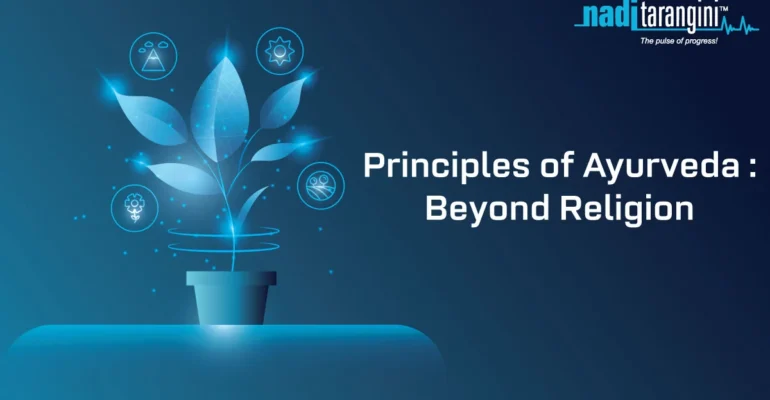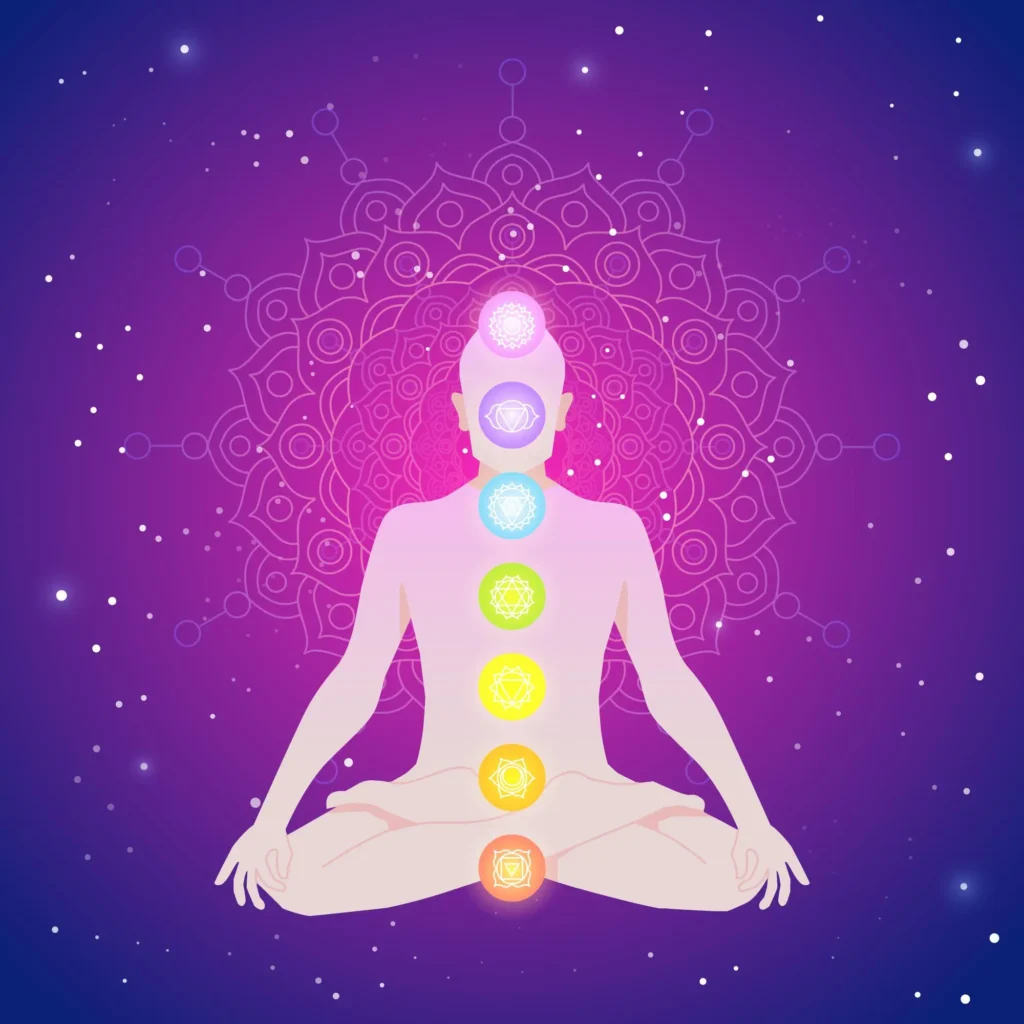Principles of Ayurveda: Beyond Religion

Principles of Ayurveda: Beyond Religion
Ayurveda’s beliefs and faiths –
Ayurveda is an ancient medicinal system which had originated in India about 5000 years back. The word Ayurveda is a conjugation of two Sanskrit words ‘Ayu’, meaning ‘life’ and ‘veda’, meaning ‘science’, thus Ayurveda literally means the ‘science of life’.
The basic principles of Ayurveda are all together different which uniquely explain all the components related to life.
Basic principles of Ayurveda –
Ayurveda believes that the entire universe is composed of five elements i.e. Vayu (Air), Jala (Water), Aakash (Space or ether), Prithvi (Earth) and Teja (Fire). These five elements (referred to as Pancha Mahabhoota in Ayurveda) are believed to form the three basic humors of human body in varying combinations. The three humors are Vata dosha, Pitta dosha and Kapha dosha are collectively called as “Tridoshas” and they control the basic physiological functions of the body along with five sub-doshas for each of the principal doshas.
This theory of Tridosha was well proven in Samhitas itself using different Tantra yukti considering different parameters including physiological assessment. Now a days, by using modern technology, one can assess functionalities of particular doshas and its vitiation also.
Loka-purush samya Siddhant –
Ayurveda philosophy tries to integrate phenomenological aspects of man (Purusha), forming a single unit of the universe (Loka).Ayurveda considers the human body as systemic components connected in a cybernetic way. Ayurveda looks into a holistic approach within the body as well as outside the human body through integration with the social and physical experimentation.
Microcosm and macrocosm are not static and immutable components but are dynamic forces continually interacting with each other. It is based on empirical evidence from observation and experimentation.
Body matrix according to Ayurveda –

According to Ayurveda, the human body has four basics matrixes -the dosha, dhatu, mala and agni. Life in Ayurveda is conceived as the union of body, senses, mind and soul. The living man is a conglomeration of three humours (Vata, Pitta & Kapha), seven basic tissues (Rasa, Rakta, Mansa, Meda, Asthi, Majja & Shukra) and the waste products of the body such as faeces, urine and sweat. Thus, the total body matrix comprises of the humours, the tissues and the waste products of the body. The growth and decay of this body matrix and its constituents revolve around food which gets processed into humours, tissues and wastes. Ingestion, digestion, absorption, assimilation and metabolism of food have an interplay in health and disease which are significantly affected by psychological mechanisms as well as by metabolic fire (Agni).
Each Dosha along with it’s subcomponents has anatomical, physiology, pathology, disease, prognostic, pharmacological (drugs that aggravate or decrease Dosha), and therapeutic perspectives.
Tridosha Siddhanta –
Vata- Pitta and Kapha are three basic doshas within body. They are responsible for basic functions of body. Three doshas (i.e., tridosha) represents distinct physiologic processes: vata (principle of movement), pitta (principle of transformation), and kapha (principle of structure). All three doshas are always present, albeit in varying proportions according to the individual. Each individual’s health is influenced by the innate proportion of the three doshas, known as prakruti or nature, and by the state of disequilibrium of these doshas, known as vikruti (i.e., the current state of imbalance of the doshas).
Vata is the dosha involved in transportation in the body, from the transportation of molecules to the transportation of nervous impulses.
Pitta in general does the bodily functions related to digestion and metabolism. All metabolic and catabolic activities, biochemical reactions, and the process of energy exchange are due to pitta. There is always involvement of pitta dosha in every reaction or changes take place inside our body.
Kapha is also said as Bala & is responsible for Vyadhikshamatva i.e. fighting against the pathogens and it provides stability to the body.
Health or sickness depends on the presence or absence of a balanced state of the total body matrix including the balance between its different constituents. Both the intrinsic and extrinsic factors can cause disturbance in the natural equilibrium giving rise to disease. This loss of equilibrium can happen by dietary indiscrimination, undesirable habits and non-observance of rules of healthy living. Seasonal abnormalities, improper exercise or erratic application of sense organs and incompatible actions of the body and mind can also result in creating disturbance of the existing normal balance.
Here Is the science of Ayurveda differs with its belief on imbalances within dosha causing diseased state than modern science which emphasizes on pathogen manifestation approach in most of the cases.
The unique concept of Prakruti –
Prakruti represents another interesting facet of basic principles of Ayurveda having great impact on predictive medicine. Prakruti can predict characteristics like physiological, physical and mental features of an individual, and is classified into subgroups depending on specific dosha predominance.
Etymologically Prakruti means pra = primary or first, kruti = formation or creation) stands for the prototype representing the basic formative distinction in a given individual. For practical purposes, it can be characterized by the observation of dosha activity in the body and eventually to the Panchamahabhuta status in the body.
Ayurveda identifies these patterns of prakruti as subgroups with the predominance of one or more dosha in an individual case. Seven subgroups of prakruti are possible representing a differential combination or equi-presence of each one of the Tridoshas, namely Vata, Pitta and Kapha.
The Identification of a genomic link to the theory of prakruti led to a search for possible classification of people on their prakruti based on their genetic make up.[10] These studies could eventually lead to a personalization of medical practice on the basis of prakruti.
Knowledge of the basic prakruti of a person is useful to stay in a state of positive health and prevent disease.
Nadi pariksha – Unique diagnostic tool mentioned by Ayurveda
Ayurveda mentioned Ashtavidha pariksha for apt diagnosis of patient. Among which Nadi pariksha is said to be more important. The dosha vitiation or dosha imbalances within body can be diagnosed by assessing different Nadi points on body. Ayurveda has mentioned detail parameters, examination methods of Nadi pariksha which is having significant health value.
Ayurveda has rich experience in pulse based diagnosis but it is subjective in nature and is highly dependent on skill of the physician.
The instruments like Nadi Tarangini can analyse Nadi from Tridosha locations mentioned by Ayurveda. It can assess dosha predominance and underlying pathophysiology at earliest stage.
Parameters of Nadi having physiological significance like nadi gati (movement), vega (rate), tala (rhythm), bala (force), tapamana (temperature), akruti (volume and tension) and kathinya (consistency of the vessel wall) across vata, pitta and kapha doshas can be assessed with the help of Nadi Tarangini.
Based on Nadi analysis, prakruti parikshan and analyzing gut and mental health, Nadi Tarangini can provide personalized lifestyle modifications for maintaining health harmony.
Treatment approach by Ayurveda –
Ayurveda mainly focuses on preventive care and illustrated lifestyle according to season, prakruti for maximize health benefits. It also emphasizes the importance of causative factor which are responsible for underlying pathophysiology.
Ayurveda treatment approach consists of restoring the balance of disturbed body-mind matrix through regulating diet, correcting life-routine and behaviour, administration of medicines and panchakarma. It also focuses on Rasayan chikitsa to avoid further deterioration of body elements and for boosting proper functioning after diseased state.
Based on the concept of Nadi pariksha, a sensor based tool Nadi Tarangini can play significant part in diagnosis- treatment approach mentioned by Ayurveda.
It can be helpful to find causative factors, can assess metabolic health, mental health, can analyse prakruti and can assess imbalances within dosha. Based on above diagnosis medicines, panchakarma and lifestyle modifications can be suggested.

Ayurveda is growing fast globally with advancement in researches. Various theories and logic behind it is proving beneficial to many medical streams. In the era of advances in personalized medicine, Ayurveda which mentioned personalized approach in medicines long back is proving very effecting for betterment of life.


